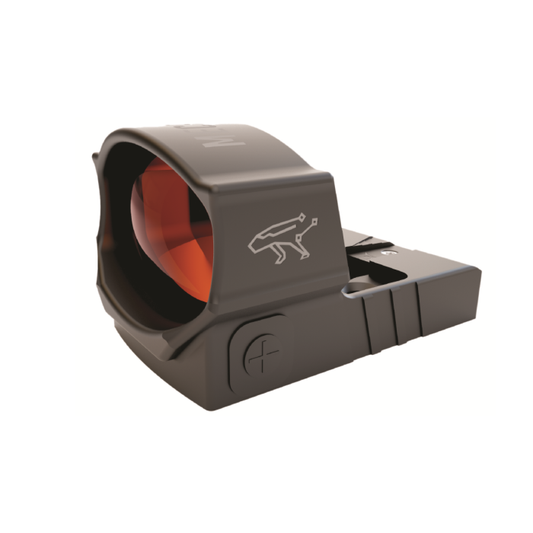

CANIK Mecanik Mo2 Red Dot offers precise aiming with a 1x magnification for quick target acquisition. Built for efficiency, its 22 mm lens provides bright visibility in various lighting conditions, making it an excellent choice for hunting or tactical shooting. The lightweight design at just 4.5 oz minimizes added weight, ensuring easy handling without compromising performance. With a durable aluminum alloy construction and a black anodized finish, this red dot sight is designed to withstand the rigors of outdoor use.
Adjustable brightness settings enhance usability in different environments, allowing shooters to customize their experience on the fly. The sight is engineered for easy mounting, compatible with the Vortex Venom footprint, ensuring a seamless fit on different firearms. With a focus on functionality and reliability, the CANIK Mecanik Mo2 Red Dot is tailored for both enthusiasts and professionals who prioritize performance.
Key Features:
- BRIGHT RETICLE for clear sighting in various lighting conditions.
- QUICK TARGET ACQUISITION ensures you won't miss a moment, ideal for fast-paced shooting.
- DURABLE CONSTRUCTION withstands harsh environments, providing reliability you can trust.
- EASY MOUNTING with Vortex Venom footprint compatibility for seamless integration.
- ADJUSTABLE BRIGHTNESS allows for customization based on your shooting environment.
- OPTICAL CLARITY enhances your focus and reduces eye strain during extended use.
- LIGHTWEIGHT DESIGN minimizes added weight on your firearm for better mobility.
- LONG BATTERY LIFE ensures your sight is ready when you are, eliminating downtime.
Technical Specifications
| Specification | Details |
|---|---|
| Magnification | 1x |
| Lens Diameter | 22 mm |
| Weight | 4.5 oz |
| Dimensions | 3.2" x 1.8" x 1.6" |
| Material | Aluminum Alloy |
What’s in the Box?
- CANIK Mecanik Mo2 Red Dot
- Lens covers
- Padded case
- Neck strap
- User manual
Customer Reviews
"The CANIK Mecanik Mo2 Red Dot transformed my shooting game. Quick target acquisition and super easy to adjust!"
"I love how lightweight it is. Perfect for my outdoor competitions!"
"This sight excels in low light. Highly recommended for hunters!"
FAQ
Q: How does the CANIK Mecanik Mo2 Red Dot perform in low light?
A: The CANIK Mecanik Mo2 Red Dot is designed with a bright reticle that allows for exceptional visibility in low light conditions, making it ideal for dusk hunting and tactical situations.
Q: Can I mount the CANIK Mecanik Mo2 on different firearms?
A: Yes! The sight features a Vortex Venom footprint, ensuring compatibility with a wide range of firearms. Enjoy hassle-free mounting on your preferred weapon.
Q: What is the battery life like on the CANIK Mecanik Mo2 Red Dot?
A: The battery life is designed to extend through multiple shooting sessions, so you won’t have to worry about replacing it often, ensuring it’s ready whenever you are.
Similar Models
Looking for more options? Explore our extensive CANIK lineup, including models like the CANIK TP9 Elite SC for superior performance and the CANIK METE series for enhanced accuracy. Discover our full collection for exceptional firearm accessories tailored to your shooting needs!
You May Also Like
Here’s some of our most similar products people are buying. Click to discover trending style.






